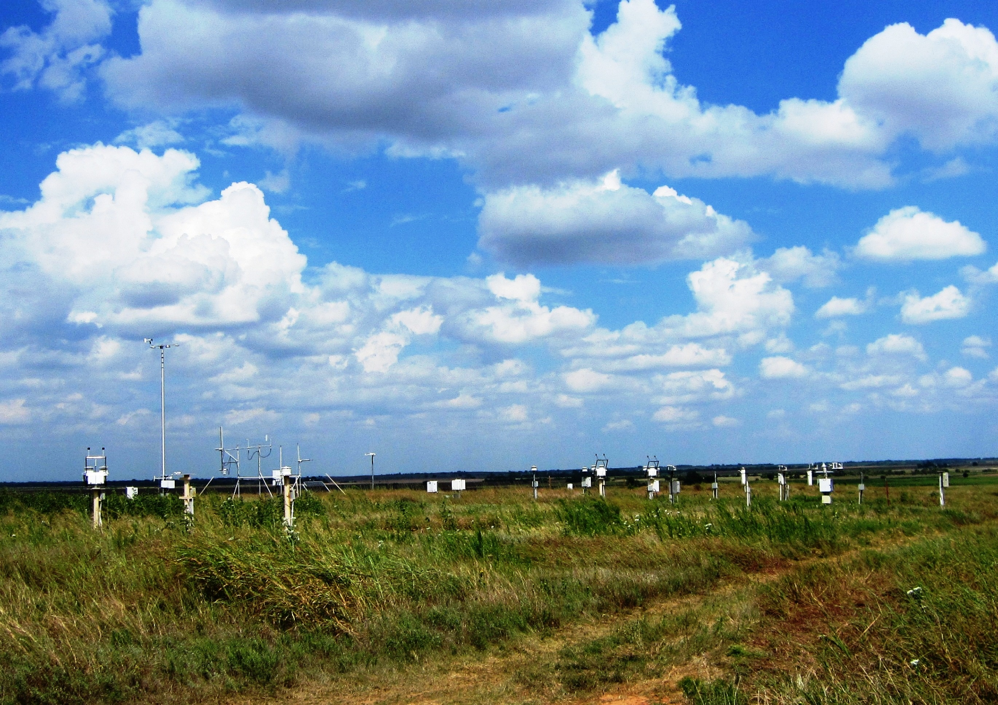Atmospheric measurements guide model toward improved prediction of clouds
Submitter
Fast, Jerome D
— Pacific Northwest National Laboratory
Area of Research
Cloud Processes
Journal Reference
Tai S, J Fast, W Gustafson, D Chand, B Gaudet, Z Feng, and R Newsom. 2020. "Simulation of Continental Shallow Cumulus Populations using an Observation‐Constrained Cloud‐System Resolving Model." Journal of Advances in Modeling Earth Systems, 12(9), e2020MS002091, 10.1029/2020MS002091.
Science

Figure 1. Integrating real-world observational data with mathematical models allows for better representations of shallow clouds. Image courtesy of the Atmospheric Radiation Measurement user facility.
Accurately predicting the life cycle of shallow convective clouds is a challenging task. Atmospheric models sometimes show errors when trying to reproduce realistic daytime meteorological conditions in the boundary layer, which is the turbulent zone stretching from the ground upward to roughly two kilometers into the atmosphere where shallow convective clouds form. One correction method relies on effectively using real-world data to reduces those errors. Local-scale observations of the temperature, humidity, and wind collected from a field site located over northern Oklahoma provide insights about the actual state of the boundary layer and its daily evolution. Information extracted from the observations can then be integrated into the model to adjust the predicted meteorological conditions.
Impact
Researchers used advanced mathematical techniques to optimally integrate meteorological observations over northern Oklahoma with mesoscale model predictions. The model better predicted cloud populations when local horizontal and vertical gradients in wind, temperature, and humidity were represented more realistically. This enables researchers to better understand the processes, such as land-atmosphere coupling, boundary-layer turbulence, atmospheric stability, and regional-scale circulations, that influence clouds and consequently climate. The results also extended the atmospheric phenomena that can be studied by advanced mathematical assimilation techniques.
Summary
Researchers used observations of continental shallow cumulus clouds on August 30, 2016 during the Holistic Interactions of Shallow Clouds, Aerosols, and Land‐Ecosystems field campaign as the basis for simulation by an observation-constrained, cloud-system-resolving model. They applied a state-of-the-art mathematical data assimilation system to integrate both routine and unique boundary-layer measurement data sets into the Weather Research and Forecasting model to ascertain how improving the environmental conditions influences forecasts of shallow convective cloud populations and their evolutions over time. The unique boundary-layer measurement data set was collected from the U.S. Department of Energy’s Atmospheric Radiation Measurement Southern Great Plains observatory. Several modeled experiments comparing various data assimilation techniques and observations identified the impact of the assimilation technique on the prediction of cloud evolution. The analyses indicate that the more accurate reproduction of shallow-convective cloud populations is seen through more accurate cloud initiation time and cloud-base height data, which is due to improving the representation of ambient meteorological conditions in the important few kilometers near the Earth’s surface.
Keep up with the Atmospheric Observer
Updates on ARM news, events, and opportunities delivered to your inbox
ARM User Profile
ARM welcomes users from all institutions and nations. A free ARM user account is needed to access ARM data.


















